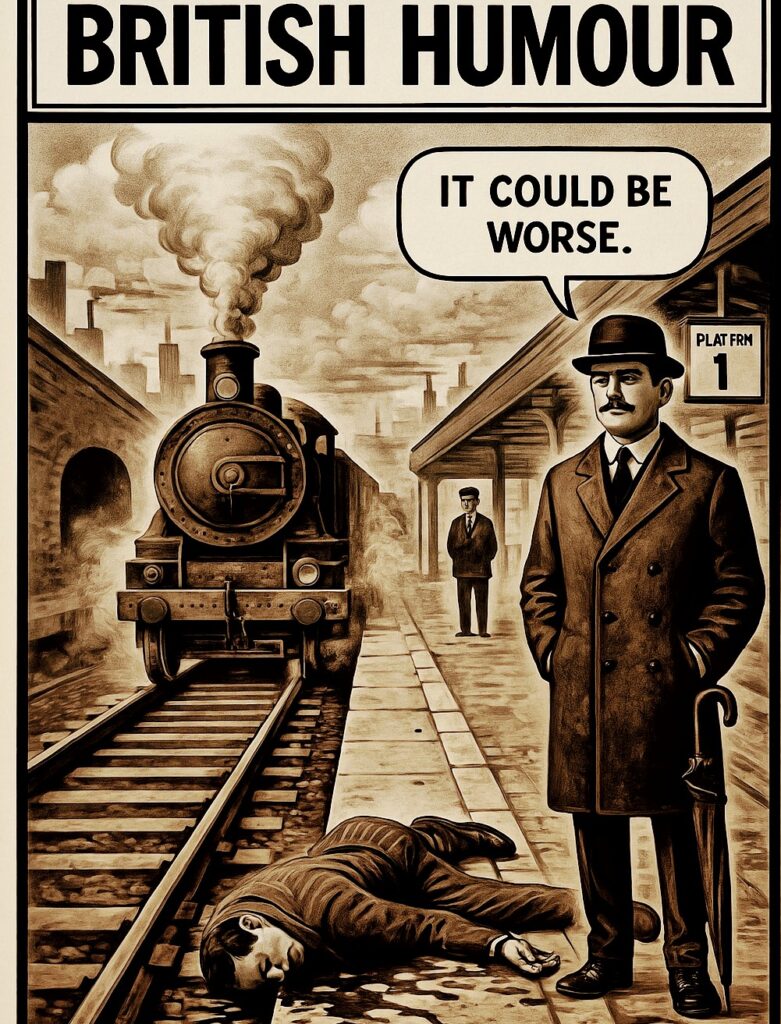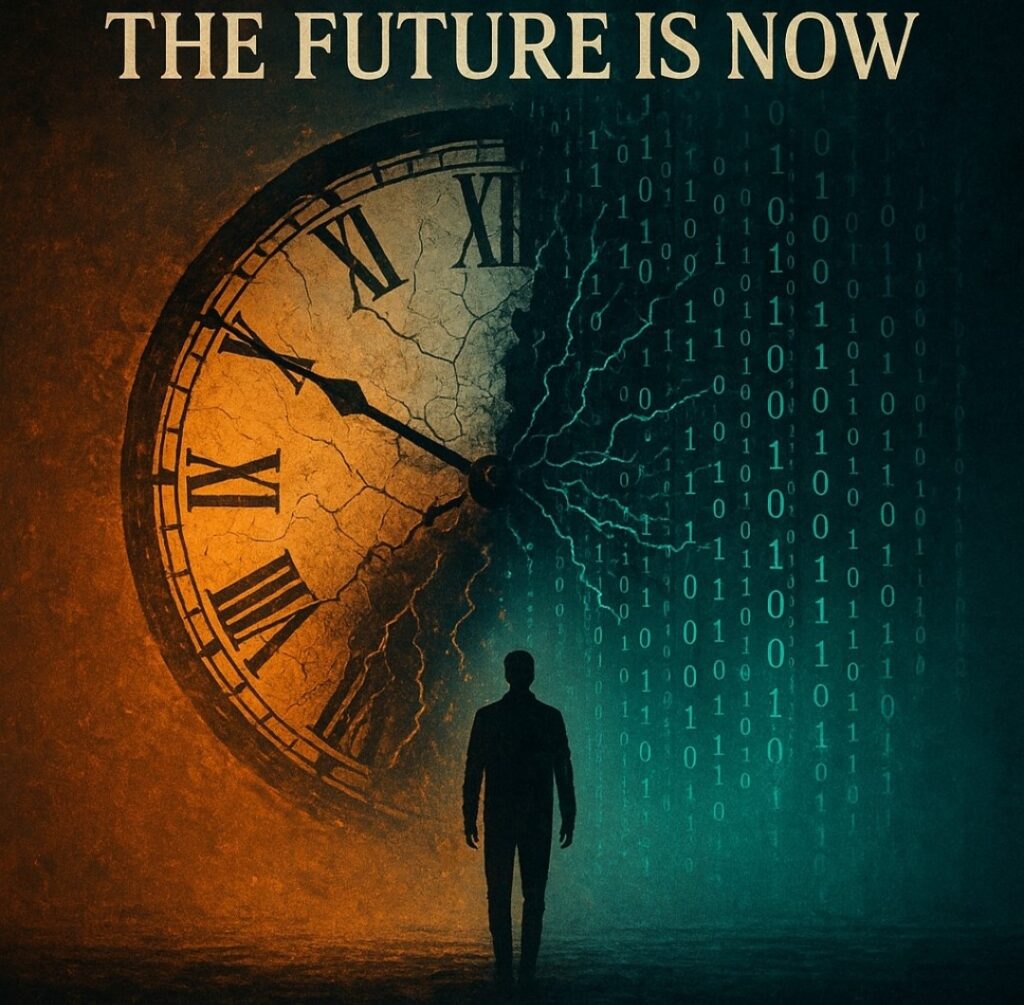Biomechanical Nightmare

Biomechanical Nightmare is a landscape where the boundaries of the human dissolve, and machine and organism merge into an indistinguishable fusion.
In a world of biomechanical nightmare, cables replace muscles; pistons are fastened to the spine of bones. The body as we know it turns into something alien from within. The result: neither fully human nor fully machine. The most familiar thing (our body) becomes the most alien. This state of “in-betweenness” opens up an “uncanny” space, as Žižek often emphasizes. The body we once knew and trusted transforms into something foreign from the inside out.
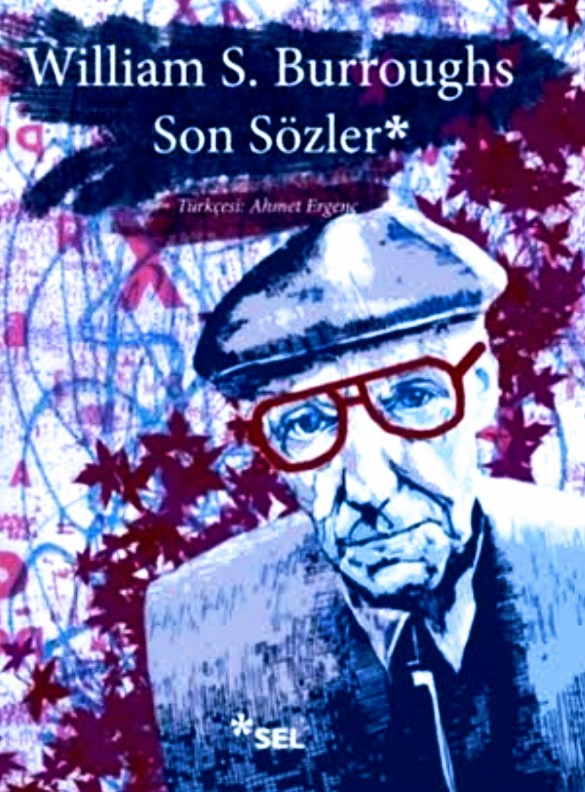
In the music video for Kurt Cobain’s Heart-Shaped Box, there is a crucified Christ. Christ, nailed to the cross, suffers, bleeding from every part of his body, with vultures flocking around his head. Did you know that Cobain originally wanted William S. Burroughs to play Christ in that iconic scene? Burroughs mentions this in his last book (Last Words, published by Sel). At that time, William may indeed have been a strikingly fitting Christ figure.
I think Kurt Cobain had sensed something.
The electrical pulses in his heart, together with his mind, almost projected the future.

The connection between the philosophy of the Beat Generation writers (1950s) and today’s technological literature (techno-literature, cyberpunk, digital narratives), though seemingly belonging to different eras on the surface, carries a fundamental kinship of spirit: a rebellion against authority, norms, and a uniform consciousness. Why?
Because Burroughs was an experimental artist figure who declared war on the organic fracture within language itself. For him, “To speak is to lie.” His formulation of the Cut-Up technique as “cut, paste, mix” reflected a desire to break, to transform. In essence, he was probing the material, visible fissures of language. On this symbolic crack, he tried to create a kind of physical magnetic field, an intuitive talisman.
Biomechanical Nightmare: The Flesh–Machine Tension and the Orgone Accumulator
Wilhelm Reich, unlike Freud, believed that healing through talking was not as effective as healing the body directly. Reich had other ideas in mind. For instance, he revealed that the surface of the skin carries currents that ripple with both anxiety and pleasure. He called this fluctuation of currents Orgone, a form of biological energy present in the body and the atmosphere.

Reich argued that this energy helped maintain homeostasis in humans and in the environment, and that its disruption or depletion could lead to the development of cancer in the body or the desertification of the earth.
In 1961, Reich produced boxes called orgone accumulators to concentrate atmospheric orgone energy. These were made in various sizes to suit both laboratory animals and human beings.
The Beat Generation’s state of “being on the road” has transformed today into a state of “roaming through the networks.”
Physical highways have taken the shape of digital pathways. Artificial intelligence, algorithms, and the networked society are redefining the existence of the individual.
In the digitalization of reality, language, code, and imagery intertwine. Escape is no longer sought on physical roads but within digital networks and virtual worlds.
Texts now possess an experimental structure that is interactive and hyperlinked (hypertext).
Burroughs, in particular, regarded language itself as a “control mechanism” and tried to produce a practice of liberation by breaking language apart through his “cut-up” technique.
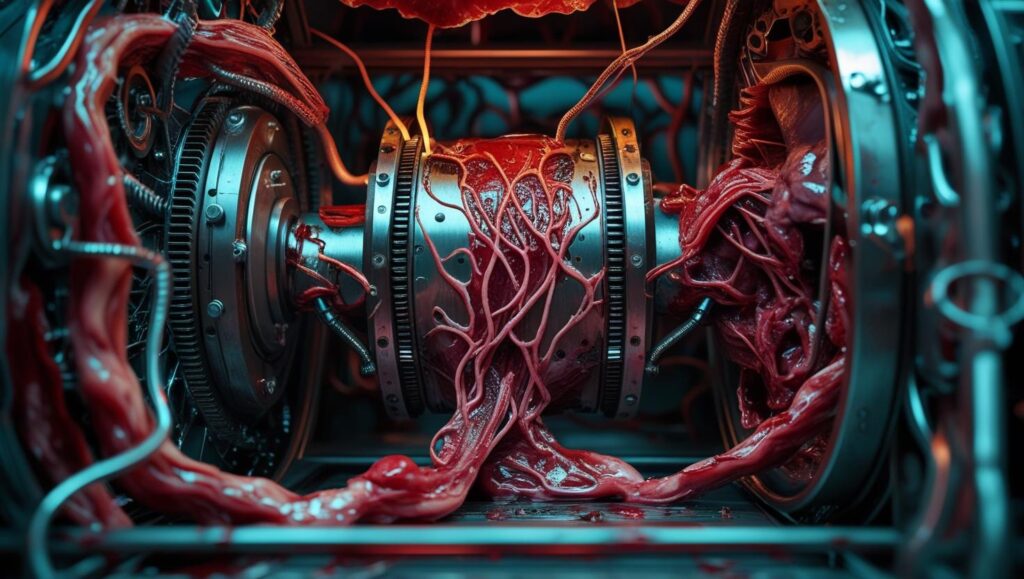
The synthesizing of ideas, their displacement through deconstructive methods, their mixing and reassembling—all these evoke the structures of today’s networked, entangled data world, which flows everywhere simultaneously.
Now everything is everywhere, overlapping and interwoven.
This networked mechanism has infiltrated the very capillaries of society, culture, art, and ways of living, shaping them in the process.
There is a parallel between Burroughs’ “cut-up” method and the breaking of algorithmic language today. Techno-literature, with its non-linear, fragmented, and interactive forms, also tries to break the control imposed on “language” and “narrative.”
Biomechanical Nightmare: The Flesh–Machine Tension
In the economy of visibility, the body has become the raw material for data flow.
With biometric sensors, camera algorithms, and facial recognition software, the body is no longer made only of flesh, but also of bits. We are witnessing, provocatively, the rewriting of the body.
H. R. Giger’s Biomechanical Nightmare drawing

In a dark room, in the shadow of cables hanging from the walls, a landscape emerges where flesh and metal are interlocked. This is not just an image of horror; it is the arrival on stage of that disturbing truth—the “Real”—that Slavoj Žižek so often emphasizes.
A direct and naked experience, unfiltered by language or culture.
A body distorted by metallic extensions shatters all illusions we have built about our own integrity.
From Žižek’s perspective, this nightmare is not only about the rise of technology but also about the very nature of desire.
The motor of desire is that lack, that incompleteness, which makes us human. When this lack is attempted to be filled—by “completing” the body with mechanical parts, for example—we in fact encounter an even greater void.
This is why a biomechanical being is not a perfected superhuman, but a grotesque caricature of lack itself.
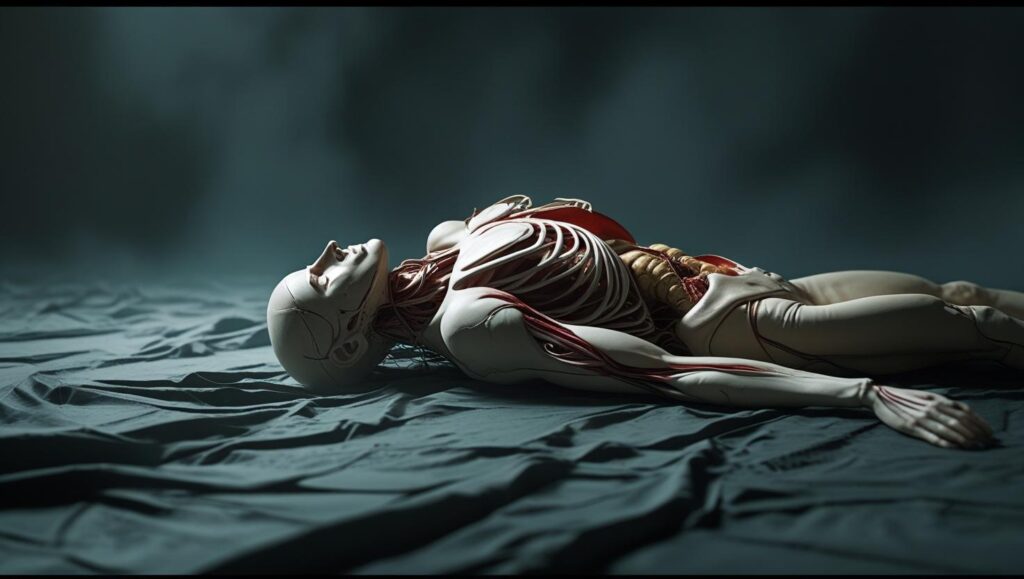
In Žižek’s ironic tone, this nightmare is actually an alarm that wakes us up: As we cling to technology, we think we are becoming freer, yet perhaps for the first time we begin to question what freedom really is—within this dark landscape.
By now, we all know that time is no longer linear.
The movement of information as packaged clusters of data from every direction has crippled and rendered passive the linear perspective of the information age.
Time is indeed like a fluid, closed circle.
We see traces of this even in symbolic, ancient narratives.
The compression of space-time has become a cultural phenomenon.
The coefficient of change and transformation has far exceeded space and memory.
Like cables and veins entangled with one another, is everything now turning into a blurry hum?
